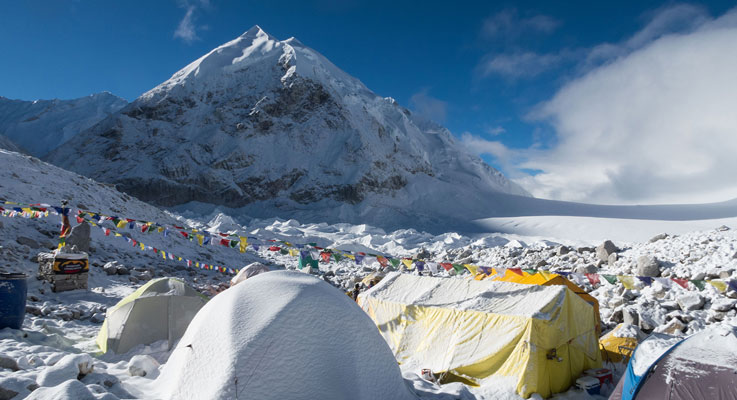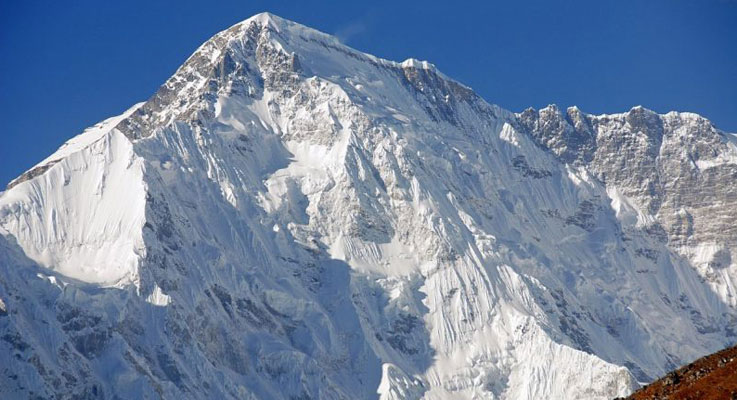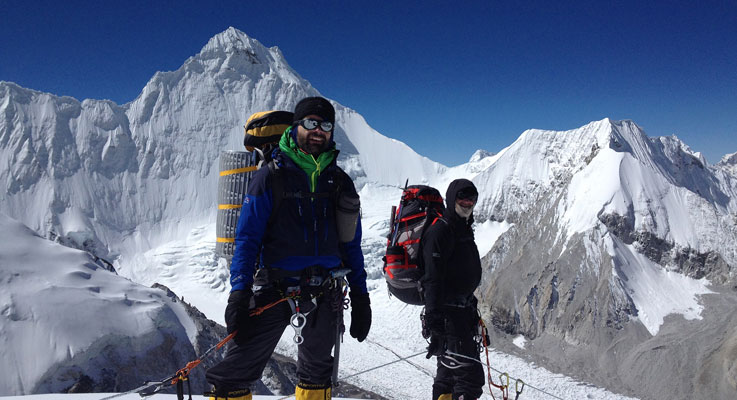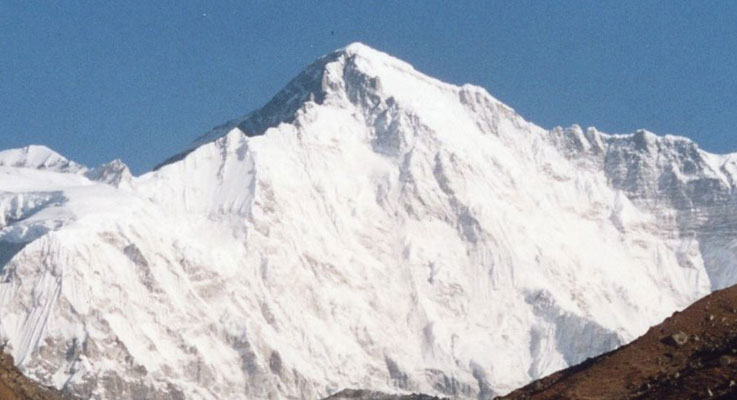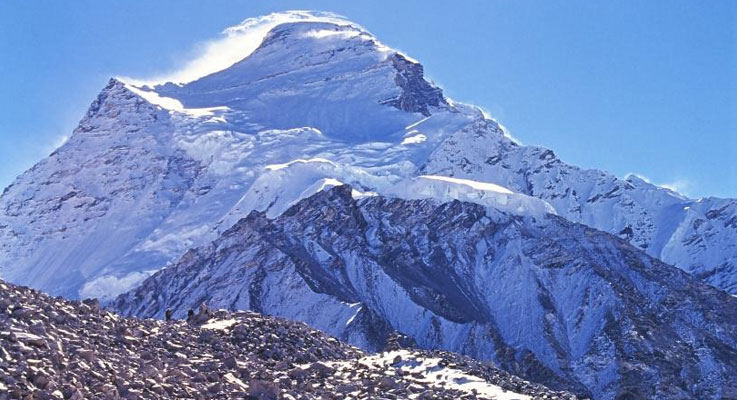-
Day 1
Arrival in Kathmandu
Upon arriving at at Tribhuwan International Airport in Kathmandu, you will be received by our airport representatives who will warmly greet you and transfer to the hotel on a private tourist vehicle. We provide 3-star accommodation in the city and we arrange for a trip briefing with dinner in the evening.
-
Day 2
Visit old town of Kathmandu
A professional guide and vehicle are provided for a day of sightseeing in and around Kathmandu city. We visit some of the UNESCO World Heritage Sites in the city along with other interesting cultural monuments that dot the valley. These include Boudhanath Stupa (the largest Buddhist shrines in the world), Pashupatinath (the holiest Hindu temple in the world), Durbar Squares (Palaces and fortresses of medieval Kings), along with other popular cultural attractions. We get to observe the lifestyle of Nepalese people, holy sadhus and monks, fascinating history as well as awe-inspiring architecture.
-
Day 3
Official formalities in Kathmandu
Formal briefing at the Ministry of Tourism. The expedition leader will check that everyone’s equipment is in working order. Overnight at Kathmandu hotel.
-
Day 4
Final preparation day in Kathmandu.
Final opportunity for last-minute purchases.
-
Day 5
Fly to Lhasa.
Early morning transfer to the Kathmandu International Airport for the hour-long flight to Lhasa. This stunning flight takes us directly across the main Himalayan range, providing magnificent mountain views. After landing at Gonggar Airport and meeting our Tibetan guide, Lhasa is a further two hour drive. The remainder of the day will be left unscheduled for participants to rest and adjust to Lhasa's higher altitude. Overnight at Lhasa hotel.
-
Day
6-7
Sightseeing around Lhasa.
After breakfast at the hotel, the group will visit the popular and awe-inspiring Potala Palace, Lhasa’s most famous attraction. From its construction in 1694 the Potala was the seat of the Dalai Lama until 1959, and serves as the final resting place for many of them. Today it is a museum and UNESCO World Heritage Site. We will also visit the Jokhang Temple, the most respected religious structure in Tibet. We may also see Norbulingka Palace, the summer home of the Dalai Lamas, and Drepung monastery. Overnight at Lhasa hotel.
-
Day 8
Drive to Shigatse.
Today includes a long drive across the Tibetan plateau. Soon after leaving Lhasa, we reach the banks of the Tsang Po, which becomes the Brahmaputra River when it enters India. There we will visit Tashilhunpo Monastery, built in 1447. This is the residence of the Panchan Lama, the second most influential religious figure in Tibet. Overnight at Shigatse hotel.
-
Day 9
Drive to Xegar.
As we continue our drive along the Tibetan highway, the northern edge of the Greater Himalaya comes into view, providing a spectacular panorama of peaks, including Mt. Everest. If time allows, we may be able to visit the main town and its hilltop monastery. Overnight at hotel outside Xegar.
-
Day 10
Acclimatization day.
This day will be spent as a rest and acclimatization day, in preparation for the high altitude of the Chinese base camp we will reach tomorrow. Participants are advised to avoid overexertion, but a visit to the main town and the gentle hike up to its hilltop monastery (4,200m) are highly recommended.
-
Day 11
Arrival at Chinese base camp.
Today we complete the drive to the Chinese base camp. Leaving Xegar, we turn south along the bumpy track that leads to the road’s end below Cho Oyu. Overnight at tented camp.
-
Day 12
Organization at Chinese base camp.
This will be an important day of preparation for the trek. Loads will be sorted out and readied for transportation, and the yaks that will carry them will arrive in the afternoon. Overnight at tented camp.
-
Day 13-16
Trek to Cho Oyu base camp.
With yaks carrying the expedition's supplies, we trek up the long valley to the base camp. Three nights will be spent at intermediate camps rising respectively 5,200 m and 5,450 m before continuing to the base camp. The benefit of acclimatization will be greatly appreciated when we finally reach the camp, our home for the duration of the climb. We arrive at the base early on day 15 and spend the afternoon organizing climbing equipment. Overnight at tented camp.
-
Day 17-40
Climbing the north-west face of Cho Oyu.
From the base camp we climb along the glacier toward the mountain and Camp 1. Because of the high altitude, this first trip up the Gyabrag Glacier and onto the mountain itself is for familiarizing participants with climbing and their equipment. It provides an excellent opportunity to view the route that will be taken and assess the mountain conditions.
Once the expedition leader is happy with the team's acclimatization, we begin (weather permitting) to climb the mountain in earnest. In order to reach a position from which we can make successful summit bids, Sherpas will make sure that all camp stores and food are taken care of. The expedition leader will check to be sure that everyone is in good health and properly adjusted to the altitude.
Throughout the climb, the leader will use a method that adjusts team members to the ever-increasing altitudes. This will be achieved by "climbing high and sleeping low," until each person feels suitably well-adjusted to make the next move up to a higher camp. At each camp, the team will climb high but then return to the lower camp to sleep. Finally, the team will return to the base camp for a prolonged rest of at least four days before moving up to occupy Camp 3 in preparation for the ultimate climb to the top. Mountain camps are situated as follows:
Camp 1 - 6,400m
Camp 1 is at 6,400 meters and five to eight hours from the base camp. The camp is reached by a steep climb from the head of the glacier at 6,100m. From here, the route follows steep scree, which improves as height is gained. Camp 1 is located on a broad shoulder of snow, which leads up to a ridge above the camp.
Camp 2 - 7,000m
Above Camp 1, a snow ridge leads to a series of ice cliffs. The way through these involves climbing a steep 50m ice wall at over 6,600m. Although straightforward, this is the hardest climbing on the route, requiring great effort to climb the steep ice at such an altitude. Improved acclimatization and greater familiarity make the prospect of subsequent climbs through the ice cliffs less daunting, but the challenge remains physically strenuous with each journey to Camp 2. Throughout this section, fixed ropes are placed in conjunction with other teams operating on the mountain at the same time. Above the ice cliffs, there are several large crevasses which we make our way around until they finally give way, giving access to Camp 2 at 7,000m. Depending upon the snow conditions, this can be a very demanding day of six to eight hours.
Camp 3 - 7,400 meters
Camp 3 is at 7,400m and roughly four hours above Camp 2. This camp is located beneath a rock band that cuts off the snow slopes of the upper basin. As we rise above the beautiful Nangpa Gosum peaks, the mountains of Nepal can be seen to the south, and the arid Tibetan plateau to the north. Although the distance to Camp 3 is short and easy, the high altitude makes the path more demanding.
Once at Camp 3, we must make every effort to prepare for the following day. This means eating, drinking, and resting. To function effectively on Summit Day, it is vital for climbers to drink as much as possible in order to replenish the calories and fluids lost during the climb. This can be a challenge, because the altitude makes even slight physical work difficult, and the task of boiling water slower than usual.
Summit Day
Summit Day begins early, as it takes several hours to make breakfast, hydrate properly, and fully prepare equipment before embarking. The camp faces west, so there is plenty of time for preparations before we depart as the sun rises. Once on our way, easily navigable snow and rock ledges lead through the short rock band above the camp. Gradually the angle of the slope relents until we emerge onto the broad windswept back of the mountain. Now it is only a matter of putting one foot in front of the other to slowly gain the towering distant summit of Cho Oyu, overshadowed only by Mt. Everest. The magnificent vista surrounding us as we cross the vast summit plateau toward the peak includes Ama Dablam, Lhotse, Nuptse, Menlugtse, Gyachung Kang and Gaurisankar, as well as the peaks of the Khumbu Himal. We reach the summit five to eight hours after leaving Camp 3.
For the descent the same route will be followed, with nights spent at Camp 3 and Camp 1.
On day 40 all climbers should be back at the base camp with belongings and equipment. Packing up the base camp is always time consuming, and everyone will need to help ensure that we leave no trace of our passing.
If we are successful in completing the climb ahead of schedule, we will leave the base early and head back to Kathmandu. However, past experience has shown that we will need all of the allotted days unless mountain conditions and the acclimatization process go exceptionally well.
-
Day 41
Trek back to road.
After finishing our trek we will descend back to the road-head with yaks carrying our equipment. Our road transport will be waiting for us. Final night spent in tent.
-
Day 42
Drive to Zhangmu.
Although the road from Lhasa to Kathmandu is in good condition, we have broken the fourteen hour drive into two days. Overnight in Zhangmu hotel.
-
Day 43
Drive to Kathmandu.
Once back in Kathmandu, we celebrate over barbecue and drinks as a chance to celebrate the expedition, say farewell, and thank the Sherpas and team members for their support and friendship throughout the trip. Overnight at Kathmandu hotel.
-
Day 44
Leisure day in Kathmandu.
Leisure day in Kathmandu. Overnight at Kathmandu hotel.
-
Day 45
Departure from Nepal
The trip concludes today. You will be dropped at Kathmandu's Tribhuwan International Airport by our airport representative for your flight departure from Nepal.

